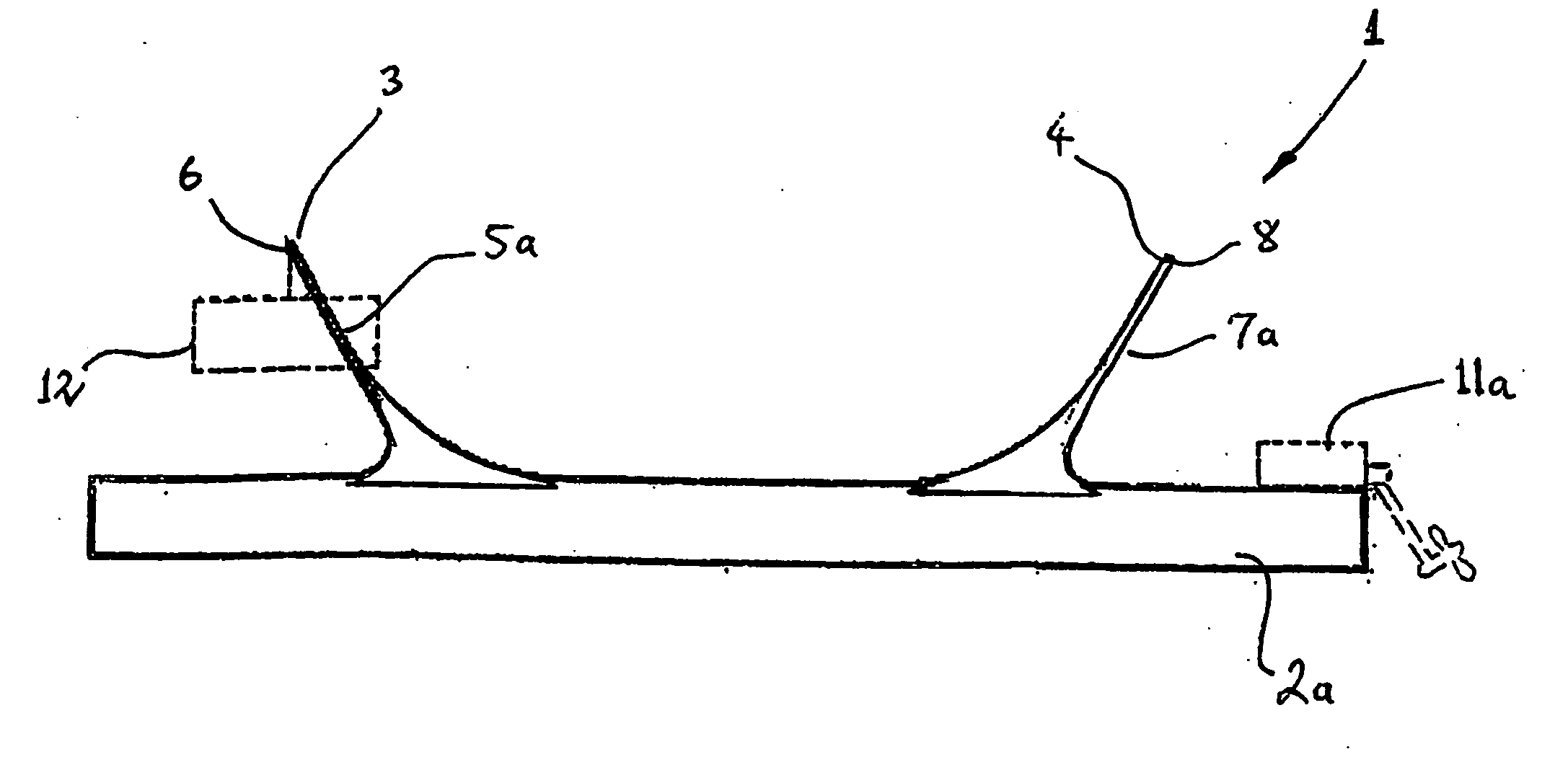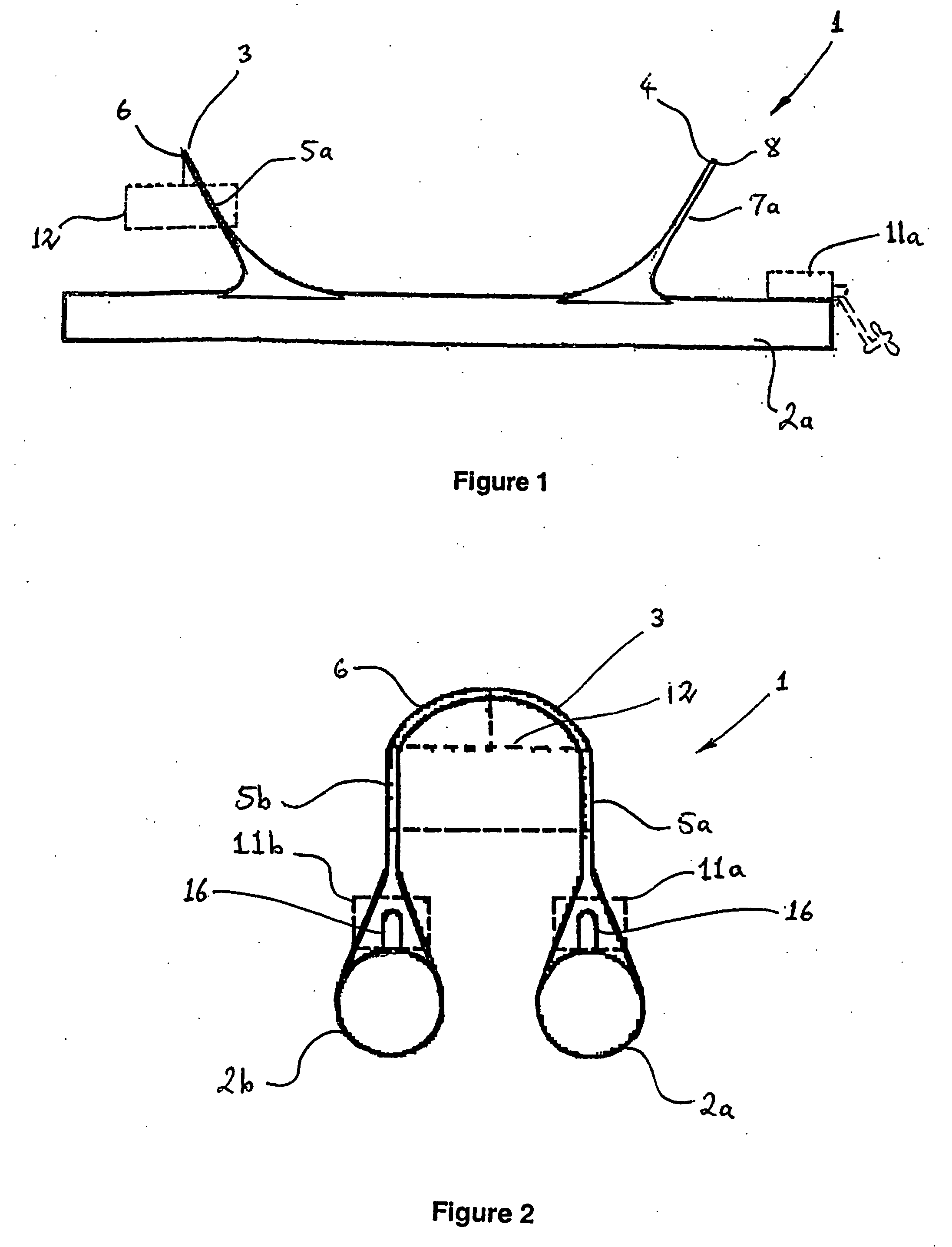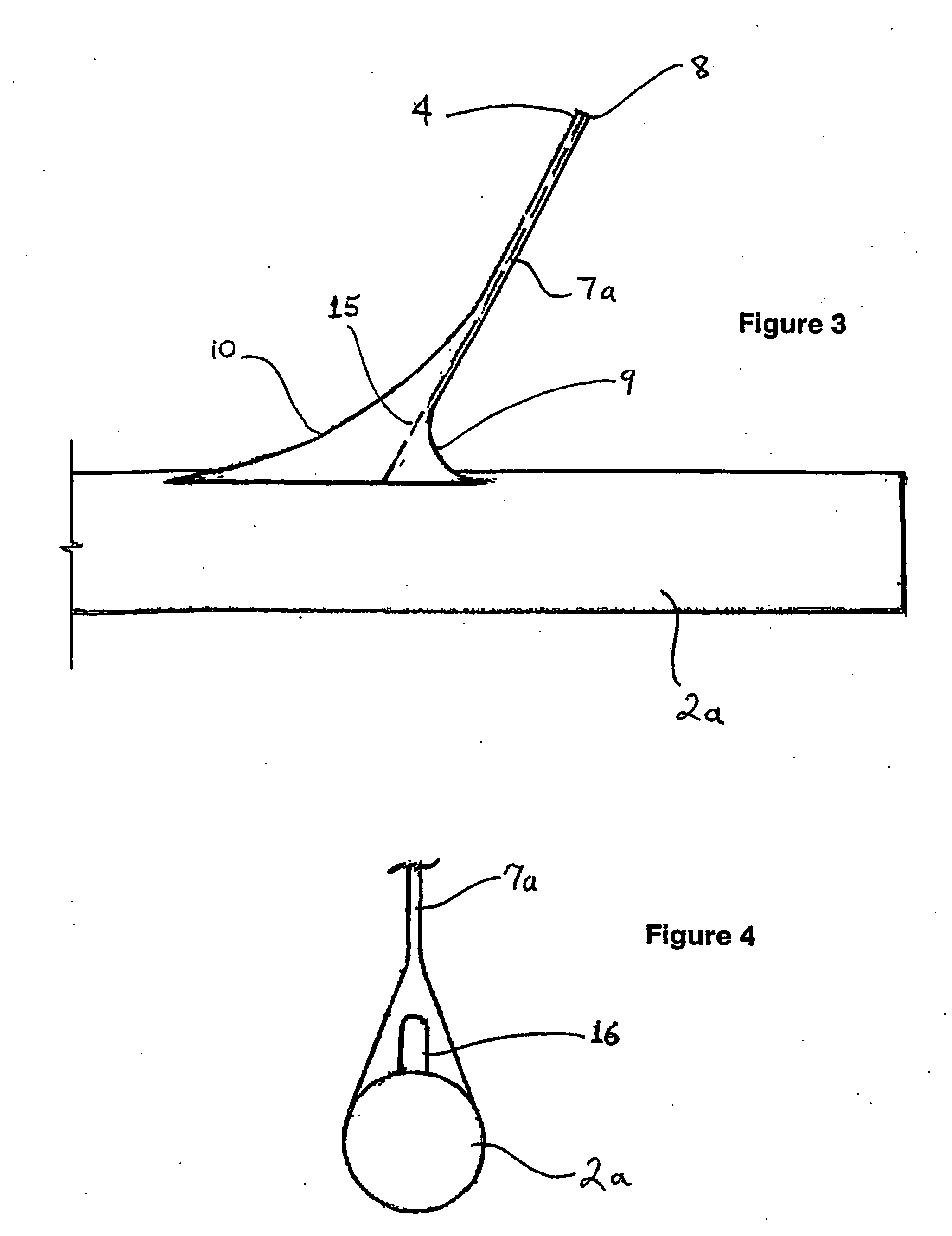Multi-hulled vessel
a multi-hulled, nautical technology, applied in the direction of waterborne vessels, floating buildings, vessel construction, etc., can solve the problems of comparatively small craft, comparatively heavy or comparatively complex rigid connecting structures, and no attempt to provide a totally rigid connection structure, etc., to avoid pollution
- Summary
- Abstract
- Description
- Claims
- Application Information
AI Technical Summary
Benefits of technology
Problems solved by technology
Method used
Image
Examples
Embodiment Construction
[0040]FIGS. 1 and 2 show a vessel 1 according to the invention. Vessel 1 has two hulls 2a and 2b of cylindrical form, with circular cross-section. Hulls 2a and 2b are secured to each other by connecting structures 3 and 4. Structure 3 has legs 5a and 5b respectively secured to hulls 2a and 2b, and an arch-shaped member 6 connecting upper ends of legs 5a and 5b. Structure 4 is similar, having legs, 7a and 7b, and a connecting member 8.
[0041] Structures 3 and 4 are substantially planar. As best seen in FIG. 1, the planes of structures 3 and 4 lie at an angle of 30 degrees from the vertical, the structures being furthest apart at their upper ends. It is emphasized that this particular arrangement of the connecting structures is optional. Arranging the two structures 3 and 4 in non-parallel planes assists in obtaining appropriate and adequate stability, stiffness and strength and a good distribution of forces without excessive weight.
[0042] The hydrodynamic forces generated by waves a...
PUM
 Login to View More
Login to View More Abstract
Description
Claims
Application Information
 Login to View More
Login to View More - R&D
- Intellectual Property
- Life Sciences
- Materials
- Tech Scout
- Unparalleled Data Quality
- Higher Quality Content
- 60% Fewer Hallucinations
Browse by: Latest US Patents, China's latest patents, Technical Efficacy Thesaurus, Application Domain, Technology Topic, Popular Technical Reports.
© 2025 PatSnap. All rights reserved.Legal|Privacy policy|Modern Slavery Act Transparency Statement|Sitemap|About US| Contact US: help@patsnap.com



